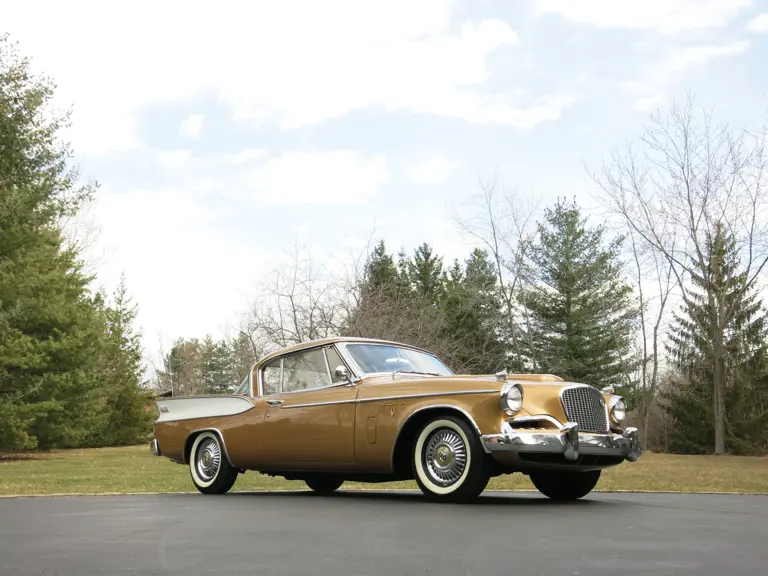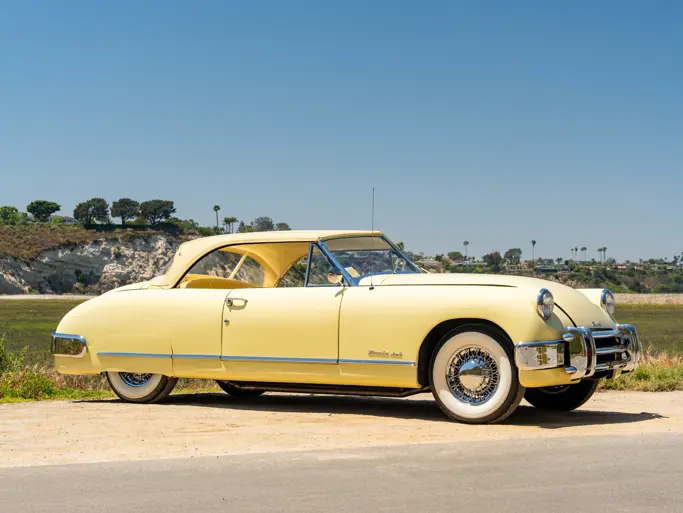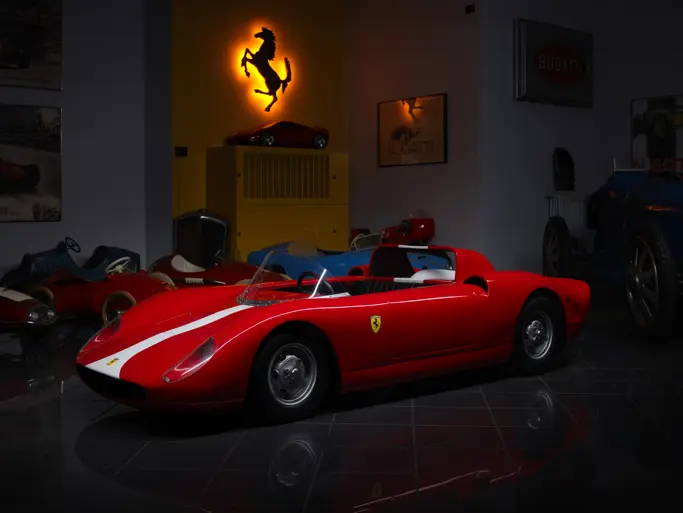 | Auburn, Indiana
| Auburn, Indiana
The Studebaker Company was formed in 1852 when brothers Henry and Clement Studebaker opened a small blacksmith shop in South Bend, Indiana and soon began producing horse-drawn wagons. Soon, the pair was joined by a third brother, John M. who made fortunes selling wheelbarrows to gold miners in California. The financial capital contributed by John allowed the small company to grow and by the end of the 19th Century, The Studebaker Brothers Manufacturing Company had become one of the largest producers of horse drawn vehicles in the world.
With the advent of the automobile, the company focused their interest on building their first vehicle in 1902, which was electric-powered, and by 1904 had produced their first gasoline automobile. In 1910, the company merged with the already successful E-M-F automobile company in Detroit and was now one of the largest producers of automobiles in America. Sales of the Studebaker automobiles continued to rise and the company prospered until the stock market crash of 1929. Albert R. Erskine, who became president of the company in 1915, felt the depression would be short-lived and financially leveraged the company, which would force Studebaker into receivership in 1933. The company was barely saved by Paul G. Hoffman and Harold S. Vance who were able to pull the company from receivership and guide the company through the depression. In 1939, the company introduced a new model, called the Champion, which became instantly successful and sold in large numbers until the outbreak of the Second World War when passenger vehicle production stopped.
With the end of the Second World War, the Studebaker Company began its postwar years with a very solid financial platform. This was the result of the very successful Studebaker Champion, which sold well from 1939 until the beginning of the war, as well as a number of government cost-plus war contracts, which contributed immensely to the company’s bank accounts. Hoffman and Vance continued to run the company and with their leadership, Studebaker was able to introduce a completely redesigned vehicle for 1946. This was a big advantage for Studebaker, as the other American car companies continued to build and sell their prewar models with only minimal changes while they spent two or three years re-tooling for new models.
The 1946 Studebaker line used the existing and previously successful Champion name and were offered in two- and four-door sedan body styles as well as a three-passenger coupe. The new Studebakers were designed by the already well-known industrial designer Raymond Loewy. Loewy was hired by Studebaker as an outside design consultant in 1936. After the war, Loewy returned to Studebaker. The new 1947 models featured many of Loewy’s signature design cues such as flush front fenders and clean, but dramatic rearward lines on the fenders and trunk. Another signature Loewy design was the rear wrap around window, which would become an iconic design and renowned trademark for both Loewy and Studebaker.
By 1949, the American automobile industry was changing quickly. The “Big Three”- Ford, Chrysler and General Motors had introduced new and dramatic automobiles that looked futuristic and were powered by large V-8 engines. With their large financial capitals, they were able to introduce models for every budget. Studebaker was no longer financially able to compete with the larger companies and their models were soon outdated stylistically and dramatically underpowered with small, six-cylinder engines. Also, their production techniques were now outdated and they did not have the money to improve their factories and keep up with the necessary production volumes needed to create profits. The initial postwar profits began to decrease, as did their sales.
By 1954, the once proud Studebaker Company had been taken over by the Packard Motor Car Company who was also struggling to keep up with the Big Three. After a series of mergers and takeovers the struggling Studebaker Company discontinued producing vehicles in 1966.
For the 1957 model year Studebaker’s most expensive models were the President, the Silver Hawk and the Golden Hawk. While the Presidents were built with a variety of body styles, the Silver and Golden Hawks were only produced as two-door coupes. There were approximately 9,600 Silver Hawk coupes built and sold for a list price of about $2,300 compared to only about 4,400 Golden Hawk coupes, which had a list price of about $3,200.
This 1957 Studebaker Golden Hawk coupe is a largely original vehicle that was given an older cosmetic restoration and today remains in very good overall condition.
Upon close inspection, the body appears to be very straight and solid with no evidence of damage or repair. The doors fit the body well with even gaps and margins throughout. The hood and rear decklid also fit the body well with good alignment and gaps. The gold and white paint, while older, remains clean and presentable with an even gloss. There are the expected areas of use and wear, but the paint in generally very clean. The chrome and stainless trim items are clean with no unusual amounts of discoloration or oxidation.
The interior is either original or quite possibly has been replaced many years ago. While showing signs of wear and use, it is generally very good condition. The seats, door panels, headliner and carpets are clean and presentable with no objectionable wear patterns or damage. The dashboard is in excellent condition with all of its proper gauges and controls. The glass panels are in very good condition as well.
The engine bay is extremely clean and well detailed. It should be noted that this example is fitted with the rare and desirable Jet Stream Supercharger. The chassis appears largely original, but well maintained and is generally clean with no evidence of excessive wear, damage or repair. The car retains its original wheels with newer whitewall tires.
This example has many factory and period accessories including the Jet Stream supercharger, automatic transmission, radio with dual rear antennas and bumper guards. Overall, this is a very clean and well-presented example of what many collectors consider to be the most desirable postwar Studebaker built.





